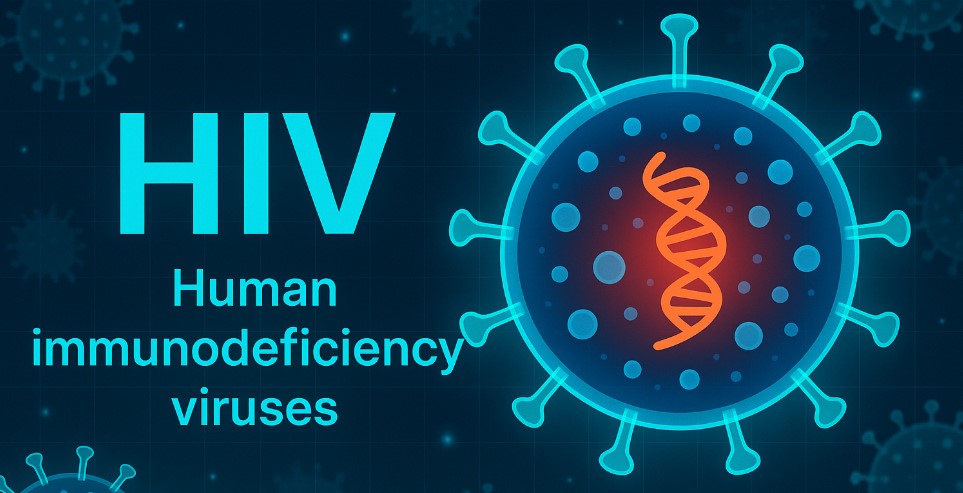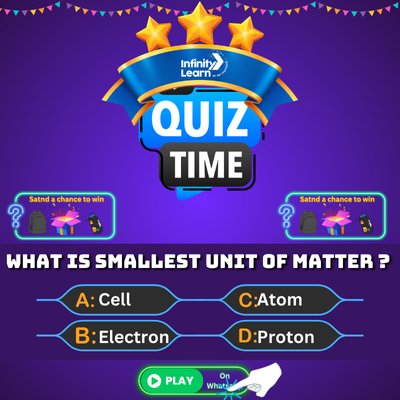Table of Contents
HIV is a virus that slowly weakens the immune system by targeting specific white blood cells. If someone doesn’t receive treatment, the virus can advance to AIDS, which is considered the final stage of HIV. Antiretroviral medicines help manage the infection, keeping the immune system stronger for a longer time and preventing the condition from progressing.

HIV Full Form
HIV Full Form is Human Immunodeficiency Virus. HIV-1 first came from chimpanzees to humans in Central Africa in the early 20th century. It began to spread worldwide in the late 1970s, and AIDS was officially identified in 1981. Thanks to global efforts, access to antiretroviral therapy rose from 7.8 million people in 2010 to 29.6 million in 2021, helping reduce both transmission rates and deaths across many countries.
History of HIV Discovery
The story of HIV begins in the early 1980s when doctors in the U.S. noticed rare infections and cancers in healthy young men. These signs raised concern and led scientists to search for a cause. In 1983, researchers in France found a virus they believed caused the new illness. They named it LAV. Around the same time, scientists in the U.S. found a similar virus and called it HTLV-III. Later, both were confirmed as the same virus and renamed HIV.
Must Check – List of All Full Form
How HIV Affects the Human Body?
HIV enters the body and weakens the immune system. It mainly targets CD4 cells, a type of white blood cell that helps the body fight infections. After entering the cell, HIV uses them to make more copies of itself. Once this process starts, more CD4 cells are lost and makes the immune system weak. Due to this, the body fails to fight even simple infections.
HIV gradually destroys the immune system without treatment. This damage does not happen all at once; it happens slowly. People may not feel sick at first, but as the virus spreads, signs like weight loss, fever, or tiredness may appear. If HIV is not treated well, then this turns into AIDS. The immune system becomes too weak to fight off infections or diseases like pneumonia and some types of cancer.
Difference Between HIV and AIDS
HIV and AIDS are not the same. HIV stands for Human Immunodeficiency Virus. It enters the body and attacks the immune system, especially white blood cells that fight infections. Over time, HIV weakens the immune system. If left untreated, it can lead to AIDS, which is the final and most severe stage of HIV.
The immune system becomes too weak to fight off infections or diseases in this. So, HIV is the virus, and AIDS is the condition that may develop after the immune system grows too weak due to the virus.
Do Check – IBM Full Form
Different Types of HIV
There are two main types of HIV:
- HIV-1: This is the most common type found worldwide. It spreads more easily and progresses faster than HIV-2. Most cases of HIV infection are due to HIV-1.
- HIV-2: This type is less common and mostly found in West Africa. It spreads more slowly, is less infectious, and progresses to AIDS at a slower rate than HIV-1.
Common Symptoms of HIV Infection
HIV often shows no clear signs at first, but over time, certain symptoms may appear. These signs can vary from person to person. Read about them below:
- Fever
- Fatigue
- Weight loss
- Night sweats
- Swollen lymph nodes
- Skin rashes
Do Check: USB Full Form
Treatment Options for HIV
Treating HIV means keeping the virus under control and helping the body stay strong. Different options work together to manage health, reduce symptoms, and stop the virus from growing. Early action helps people stay healthy and avoid serious problems.
- ART uses a mix of medicines to reduce the amount of virus in the blood. This helps protect the immune system and keeps the person strong.
- Some HIV medicines come as one pill a day. This makes it easy to follow the treatment and keep the virus under control.
- PrEP helps people who do not have HIV but are at risk. Taking this daily medicine lowers the chance of getting HIV.
- PEP helps after contact with HIV. A person needs to start this treatment within 72 hours to stop the virus from entering the body.
- Doctors use blood tests to check how well the treatment works. These tests guide medicine choices and track the virus levels.
Role of Antiretroviral Therapy
Antiretroviral therapy, or ART, helps people with HIV live longer, healthier lives. It lowers the amount of virus in the body and keeps the immune system strong when taken every day.
- Keeps the HIV level low in the body
ART lowers the amount of HIV in a person’s blood. When the virus goes down, the body stays healthier. Many people reach a stage where tests can no longer detect the virus, though it is still present. This helps the immune system stay in better shape.
- Protects the immune system
HIV weakens the immune system by attacking CD4 cells. These cells help the body fight off germs. ART stops the virus from destroying too many of these cells. With the immune system under less attack, the body can fight infections more easily.
- Stops HIV from spreading to others
When ART controls the virus well, it becomes almost impossible to pass it on through sex. This helps protect partners and reduce the risk in close relationships. ART makes a big difference in cutting down the spread of HIV in communities.
- Prevents HIV from turning into AIDS
Without treatment, HIV continues to grow and weaken the body over time. ART keeps the virus in check, so it doesn’t reach the advanced stage known as AIDS. This delay or prevention protects people from serious illnesses linked to a weak immune system.
- Improves everyday health
With ART, people often feel more energetic and get sick less often. They face fewer infections, feel better, and miss fewer days of work or school. It helps them take part in normal life activities without constant health worries.
- Increases life expectancy
People who take ART as advised can live a full and long life. The treatment helps avoid life-threatening problems caused by HIV. Many people grow old with HIV and continue to live active and healthy lives thanks to ART.
Do Check: AICTE Full Form
Myths and Facts About HIV
Many people still believe false things about HIV, which leads to fear and stigma. It’s important to clear up these myths so we can treat people with respect and stop the spread of wrong information.
- Myth 1: You can get HIV by touching someone with it.
- Fact: HIV doesn’t spread through casual contact like hugging, shaking hands, or sharing food.
- Myth 2: Only certain people can get HIV.
- Fact: Anyone, regardless of age, gender, or background, can get HIV if they’re exposed.
- Myth 3: HIV means a person is going to die soon.
- Fact: With proper treatment, people with HIV can live long, healthy lives.
- Myth 4: You’ll know if someone has HIV by looking at them.
- Fact: HIV doesn’t show on the outside. Many people look and feel healthy for years.
- Myth 5: HIV and AIDS are the same thing.
- Fact: HIV is the virus. AIDS is a later stage of the infection that can be prevented with treatment.
Must Read – TNSTC Full Form
HIV vs Other STIs
HIV is one type of sexually transmitted infection, but it behaves differently from most others. HIV stays in the body for life and needs ongoing treatment, while you can cure STIs with antibiotics.
| Feature | HIV | Other STIs (e.g., chlamydia, gonorrhea, syphilis) |
| Cause | Virus | Bacteria, viruses, or parasites |
| Curable? | No (but manageable with treatment) | Most are curable (especially bacterial ones) |
| Long-term Effect | Weakens the immune system | May cause infertility, organ damage if untreated |
| Spread Through | Blood, semen, vaginal fluids, etc. | Sexual contact, childbirth, skin contact |
| Treatment | Antiretroviral therapy (ART) | Antibiotics or antivirals |
HIV Full Form FAQs
How is HIV caused?
HIV spreads when the virus enters the bloodstream through infected blood, semen, vaginal fluids, or breast milk.
What are the 4 types of HIV?
There are two main types: HIV-1 and HIV-2. HIV-1 is more common and spreads faster. HIV-2 is mostly found in West Africa and spreads more slowly.
What is HIV in boys?
HIV in boys means the virus is present in a male child or teen. It affects their immune system just like in adults and usually requires early diagnosis.








